Can Evaluative Conditioning Change Well-Established Attitudes Towards Popular Brands? Your Brain Says Yes Even Though Your Mouth Says No
Abstract
1. Introduction
2. Materials and Methods
2.1. Participants
2.2. Stimuli
Conditioning Stimuli
2.3. Individual Pre-Assessment of Brand Attitudes
2.4. Lab Experiment
2.5. Data Recording and Processing
2.5.1. Explicit Data
2.5.2. Implicit Association Test (IAT)
2.5.3. Event related potentials
3. Results
3.1. Explicit Responses (Self-Report)
3.2. IAT
3.3. Implicit Attitudes - Event Related Potentials
3.3.1. Liked Brands
3.3.2. Disliked Brands
3.3.3. Frontal Asymmetry Effects
3.3.4. LPP Effects
3.3.5. Filler Brands
4. Discussion
4.1. Self-Report and IAT
4.2. Event Related Potentials
5. Conclusions
Author Contributions
Funding
Acknowledgments
Conflicts of Interest
References
- De Houwer, J. Using the Implicit Association Test does not rule out an impact of conscious propositional knowledge on evaluative conditioning. Learn. Motiv. 2006, 37, 176–187. [Google Scholar] [CrossRef]
- Du Plessis, E. Recognition versus Recall. J. Advert. Res. 1994, 34, 75–91. [Google Scholar]
- Hollis, N.S. Like It or Not, Liking Is Not Enough. J. Advert. Res. 1995, 35, 7–16. [Google Scholar]
- Haines, D.; Chandran, R.; Parkhe, A. Winning by Being the First to Market… or Second? J. Consum. Mark. 1989, 6, 63–69. [Google Scholar] [CrossRef]
- Haley, R.I.; Baldinger, A.L. The ARF Copy Research Validity Project. J. Advert. Res. 1991, 31, 11–32. [Google Scholar] [CrossRef]
- Smith, P.W.; Feinberg, R.A.; Burns, D.J. An Examination of Classical Conditioning Principles in an Ecologically Valid Advertising Context. J. Mark. Theory Pr. 1998, 6, 63–72. [Google Scholar] [CrossRef]
- Gresham, L.G.; Shimp, T.A. Attitude toward the Advertisement and Brand Attitudes: A Classical Conditioning Perspective. J. Advert. 1985, 14, 10–49. [Google Scholar] [CrossRef]
- Dotson, J.P.; Beltramo, M.A.; Feit, E.M.; Smith, R.C. Controlling for Styling and Other ’Complex Attributes’ in a Choice Model. SSRN Electron. J. 2012, 22. [Google Scholar] [CrossRef]
- Poulsen, C.S.; Juhl, H.J.; Kristensen, K.; Bech, A.C.; Engelund, E. Quality guidance and quality formation. Food Qual. Prefer. 1996, 7, 127–135. [Google Scholar] [CrossRef]
- Fornerino, M.; D’Hauteville, F. How good does it taste? Is it the product or the brand? A contribution to brand equity evaluation. J. Prod. Brand Manag. 2010, 19, 34–43. [Google Scholar] [CrossRef]
- Rossi, P.; Borges, A.; Bakpayev, M. Private labels versus national brands: The effects of branding on sensory perceptions and purchase intentions. J. Retail. Consum. Serv. 2015, 27, 74–79. [Google Scholar] [CrossRef]
- Van Rekom, J.; Jacobs, G.; Verlegh, P.W.J.; Rekom, J. Measuring and managing the essence of a brand personality. Mark. Lett. 2006, 17, 181–192. [Google Scholar] [CrossRef]
- Stammerjohan, C.; Wood, C.M.; Chang, Y.; Thorson, E. An empirical investigation of the interaction between publicity, advertising, and previous brand attitudes and knowledge. J. Advert. 2005, 34, 55–67. [Google Scholar] [CrossRef]
- Shimp, T.A.; Stuart, E.W.; Engle, R.W. A program of classical conditioning experiments testing variations in the conditioned stimulus and contents. J. Consum. Res. 1991, 18, 1–12. [Google Scholar] [CrossRef]
- Cacioppo, J.T.; Marshall-Goodell, B.S.; Tassinary, L.G.; E Petty, R. Rudimentary determinants of attitudes: Classical conditioning is more effective when prior knowledge about the attitude stimulus is low than high. J. Exp. Soc. Psychol. 1992, 28, 207–233. [Google Scholar] [CrossRef]
- Kellaris, J.J.; Cox, A.D. The Effects of Background Music in Advertising: A Reassessment. J. Consum. Res. 1989, 16, 113. [Google Scholar] [CrossRef]
- Gorn, G.J. The Effects of Music in Advertising on Choice Behavior: A Classical Conditioning Approach. J. Mark. 1982, 46, 94. [Google Scholar] [CrossRef]
- Stuart, E.W.; Shimp, T.A.; Engle, R.W. Classical Conditioning of Consumer Attitudes: Four Experiments in an Advertising Context. J. Consum. Res. 1987, 14, 334. [Google Scholar] [CrossRef]
- Ahluwalia, R.; Burnkrant, R.E.; Unnava, H.R. Consumer Response to Negative Publicity: The Moderating Role of Commitment. J. Mark. 2000, 37, 203–214. [Google Scholar] [CrossRef]
- Sweldens, S.; Van Osselaer, S.M.J.; Janiszewski, C. Evaluative Conditioning Procedures and the Resilience of Conditioned Brand Attitudes. J. Consum. Res. 2010, 37, 473–489. [Google Scholar] [CrossRef]
- Gawronski, B.; Bodenhausen, G.V. Associative and propositional processes in evaluation: An integrative review of implicit and explicit attitude change. Psychol. Bull. 2006, 132, 692–731. [Google Scholar] [CrossRef]
- Cunningham, W.A.; Raye, C.L.; Johnson, M.K. Implicit and Explicit Evaluation: fMRI Correlates of Valence, Emotional Intensity, and Control in the Processing of Attitudes. J. Cogn. Neurosci. 2004, 16, 1717–1729. [Google Scholar] [CrossRef] [PubMed]
- Babiloni, F. Consumer Nueroscience: A New Area of Study for Biomedical Engineers. IEEE Pulse 2012, 3, 21–23. [Google Scholar] [CrossRef] [PubMed]
- Greenwald, A.G.; Banaji, M.R. Implicit social cognition: Attitudes, self-esteem, and stereotypes. Psychol. Rev. 1995, 102, 4–27. [Google Scholar] [CrossRef] [PubMed]
- Gibson, B. Can Evaluative Conditioning Change Attitudes toward Mature Brands? New Evidence from the Implicit Association Test. J. Consum. 2008, 35, 178–188. [Google Scholar] [CrossRef]
- Grahl, A.; Greiner, U.; Walla, P. Bottle Shape Elicits Gender-Specific Emotion: A Startle Reflex Modulation Study. Psychol. 2012, 3, 548–554. [Google Scholar] [CrossRef]
- Geiser, M.; Walla, P. Objective Measures of Emotion during Virtual Walks through Urban Environments. Appl. Sci. 2011, 1, 1–11. [Google Scholar] [CrossRef]
- Walla, P.; Richter, M.; Farber, S.; Leodolter, U.; Brauer, H. Food-evoked changes in humans startle response modulation and event-related brain potentials (ERPs). Fed. Eur. Psychophysiol. Soc. 2010, 24, 25–32. [Google Scholar]
- Walla, P.; Brenner, G.; Koller, M. Objective Measures of Emotion Related to Brand Attitude: A New Way to Quantify Emotion-Related Aspects Relevant to Marketing. PLoS ONE 2011, 6, e26782. [Google Scholar] [CrossRef] [PubMed]
- Walla, P.; Panksepp, J. Neuroimaging helps to clarify brain affective processing without necessarily clarifying emotions. In Novel Frontiers of Advanced Neuroimaging; IntechOpen: Rijeka, Croatia, 2013; pp. 93–118. [Google Scholar]
- Greenwald, A.G.; McGhee, D.E.; Schwartz, J.L.K. Measuring individual differences in implicit cognition: The implicit association test. J. Pers. Soc. Psychol. 1998, 74, 1464–1480. [Google Scholar] [CrossRef]
- Anderson, J.R.; Bower, G.H. Human Associative Memory; Lawrence Erlbaum Associates, Inc.: Mahwah, NJ, USA, 1973. [Google Scholar]
- Collins, A.M.; Loftus, E.F. A spreading-activation theory of semantic processing. Psychol. Rev. 1975, 82, 407–428. [Google Scholar] [CrossRef]
- Blair, I.V. The Malleability of Automatic Stereotypes and Prejudice. Pers. Soc. Psychol. 2002, 6, 242–261. [Google Scholar] [CrossRef]
- Mitchell, J.P.; A Nosek, B.; Banaji, M.R. Contextual variations in implicit evaluation. J. Exp. Psychol. 2003, 132, 455–469. [Google Scholar] [CrossRef]
- Heider, J.D.; Skowronski, J.J. Improving the predictive validity of the implicit association test. N. Am. J. Psychol. 2007, 9, 53–76. [Google Scholar]
- Davidson, R.J.; Schwartz, G.E.; Saron, C.; Bennett, J.; Coleman, D. Frontal versus parietal asymmetry during positive and negative affect (Abstract). Psychophysiology 1979, 16, 2. [Google Scholar] [CrossRef]
- Bosshard, S.S.; Bourke, J.D.; Kunaharan, S.; Koller, M.; Walla, P.; Heinonen, J. Established liked versus disliked brands: Brain activity, implicit associations and explicit responses. Cogent Psychol. 2016, 3, 1176691. [Google Scholar] [CrossRef]
- Ravaja, N.; Somervuori, O.; Salminen, M. Predicting purchase decision: The role of hemispheric asymmetry over the frontal cortex. J. Neurosci. Psychol. Econ. 2013, 6, 1–13. [Google Scholar] [CrossRef]
- Moran, T.P.; Jendrusina, A.A.; Moser, J.S. The psychometric properties of the late positive potential during emotion processing and regulation. Brain Res. 2013, 1516, 66–75. [Google Scholar] [CrossRef]
- Crites, S.L.; Cacioppo, J.T. Electrocortical Differentiation of Evaluative and Nonevaluative Categorizations. Psychol. Sci. 1996, 7, 318–321. [Google Scholar] [CrossRef]
- Bradley, M.M.; Lang, P.J. International Affective Digitized Sounds (IADS): Stimuli, Instruction Manual and Affective Ratings (Tech. Rep. No. B-2); University of Florida: Gainesville, FL, USA, 1999. [Google Scholar]
- Croft, R.J.; Barry, R.J. Removal of ocular artefact from the EEG: a review. Neurophysiol Clin. 2000, 30, 5–19. [Google Scholar] [CrossRef]
- Hayes, A. Program abstracts and algorithms: SPSS procedures for approximate randomization tests. Behav. Res. Methods Instrum. Comput. 1998, 30, 536–543. [Google Scholar] [CrossRef]
- Maris, E.; Oostenveld, R. Nonparametric statistical testing of EEG- and MEG-data. J. Neurosci. Methods 2007, 164, 177–190. [Google Scholar] [CrossRef]
- Brown, C.; Randolph, A.B.; Burkhalter, J.N. The Story of Taste: Using EEGs and Self-Reports to Understand Consumer Choice. Kennesaw J. Undergrad. Res. 2012, 2, 1–11. [Google Scholar]
- Davidson, R.J. Anterior cerebral asymmetry and the nature of emotion. Brain Cogn. 1992, 20, 125–151. [Google Scholar] [CrossRef]
- Gable, P.A.; Harmon-Jones, E. Does arousal per se account for the influence of appetitive stimuli on attentional scope and the late positive potential? Psychophysiology 2013, 50, 344–350. [Google Scholar] [CrossRef] [PubMed]
- Peterson, C.K.; Shackman, A.J.; Harmon-Jones, E.; Harmon-Jones, E. The role of asymmetrical frontal cortical activity in aggression. Psychophysiology 2007, 45, 86–92. [Google Scholar] [CrossRef]
- Blair, I.V.; Banaji, M.R. Automatic and controlled processes in stereotype priming. J. Pers. Soc. Psychol. 1996, 70, 1142–1163. [Google Scholar] [CrossRef]
- Ratcliff, R. Methods for dealing with reaction time outliers. Psychol. Bull. 1993, 114, 510–532. [Google Scholar] [CrossRef] [PubMed]
- Dovidio, J.F.; Kawakami, K.; Johnson, C.; Johnson, B.; Howard, A. On the Nature of Prejudice: Automatic and Controlled Processes. J. Exp. Soc. Psychol. 1997, 33, 510–540. [Google Scholar] [CrossRef]
- Ohme, R. How brain waves relate to brands, sales and politics? In Proceedings of the ad Effectivenes Council of the Advertising Research Foundation, New York, NY, USA, 6 November 2018; Advertising Research Foundation: New York, NY, USA, 2018. [Google Scholar]
- Ohme, R.; Reykowska, D.; Wiener, D.; Choromańska, A. Application of frontal EEG asymmetry to advertising research. J. Econ. Psychol. 2010, 31, 785–793. [Google Scholar] [CrossRef]
- Percy, L.; Hansen, F.; Randrup, R. How to measure brand emotion. Admap 2004, 39, 32–34. [Google Scholar]
- Gregg, A.P.; Seibt, B.; Banaji, M.R. Easier done than undone: Asymmetry in the malleability of implicit preferences. J. Pers. Soc. Psychol. 2006, 90, 1–20. [Google Scholar] [CrossRef]
- Olson, M.A.; Fazio, R.H. Implicit Attitude Formation through Classical Conditioning. Psychol. Sci. 2001, 12, 413–417. [Google Scholar] [CrossRef]
- Fox, N.A.; Davidson, R.J. Taste-elicited changes in facial signs of emotion and the asymmetry of brain electrical activity in human newborns. Neuropsychologia 1986, 24, 417–422. [Google Scholar] [CrossRef]
- Davidson, R.J. Cerebral asymmetry and emotion: Conceptual and methodological conundrums. Cogn. Emot. 1993, 7, 115–138. [Google Scholar] [CrossRef]
- Davidson, R.J.; Rickman, M. Behavioral inhibition and the emotional circuitry of the brain: Stability and plasticity during the early childhood years. In Extreme Fear, Shyness, and Social Phobia: Origins, Biological Mechanisms, and Clinical Outcomes; Schmidt, L.A., Schulkin, J., Eds.; Oxford University Press: New York, NY, USA, 1999; pp. 67–87. [Google Scholar]
- Cacioppo, J.T.; Crites, S.L., Jr.; Bernston, G.G.; Coles, M.G.H. If attitudes affect how stimuli are processed, should they not affect the event-related brain potential? Psychol. Sci. 1993, 1, 108–112. [Google Scholar] [CrossRef]
- Domjan, M.; Burkhard, B. The Principels of Learning and Behavior; Brooks/Cole: Monterery, CA, USA, 1985. [Google Scholar]
- Greyser, S. Irritation in Advertising. J. Advert. Res. 1973, 13, 3–7. [Google Scholar]
- Pham, M.T.; Geuens, M.; De Pelsmacker, P. The influence of ad-evoked feelings on brand evaluations: Empirical generalizations from consumer responses to more than 1000 TV commercials. Int. J. Mark. 2013, 30, 383–394. [Google Scholar] [CrossRef]
- Brown, S.P.; Homer, P.M.; Inman, J.J. A Meta-Analysis of Relationships between Ad-Evoked Feelings and Advertising Responses. J. Mark. 1998, 35, 114. [Google Scholar] [CrossRef]
- Todrank, J.; Byrnes, D.; Wrzesniewski, A.; Rozin, P. Odors can change preferences for people in photographs: A cross-modal evaluative conditioning study with olfactory USs and visual CSs. Learn. Motiv. 1995, 26, 116–140. [Google Scholar] [CrossRef]
- Wadhera, D.; Capaldi-Phillips, E.D. A review of visual cues associated with food on food acceptance and consumption. Eat. Behav. 2014, 15, 132–143. [Google Scholar] [CrossRef]
- Gustafson, B.; Yssel, J. Are Advertisers Practicing Safe Sex? Mark. News 1994, 28, 4. [Google Scholar]
- Venkat, R.; Abi-Hannan, N. Effectiveness of Visually Shocking Advertisements: Is It Context Dependent? Adm. Sci. Assoc. Can. 1995, 16, 139–146. [Google Scholar]
- Dahl, D.W.; Frankenberger, K.D.; Manchanda, R.V. Does It Pay to Shock? Reactions to Shocking and Nonshocking Advertising Content among University Students. J. Advert. Res. 2003, 43, 268–280. [Google Scholar] [CrossRef]
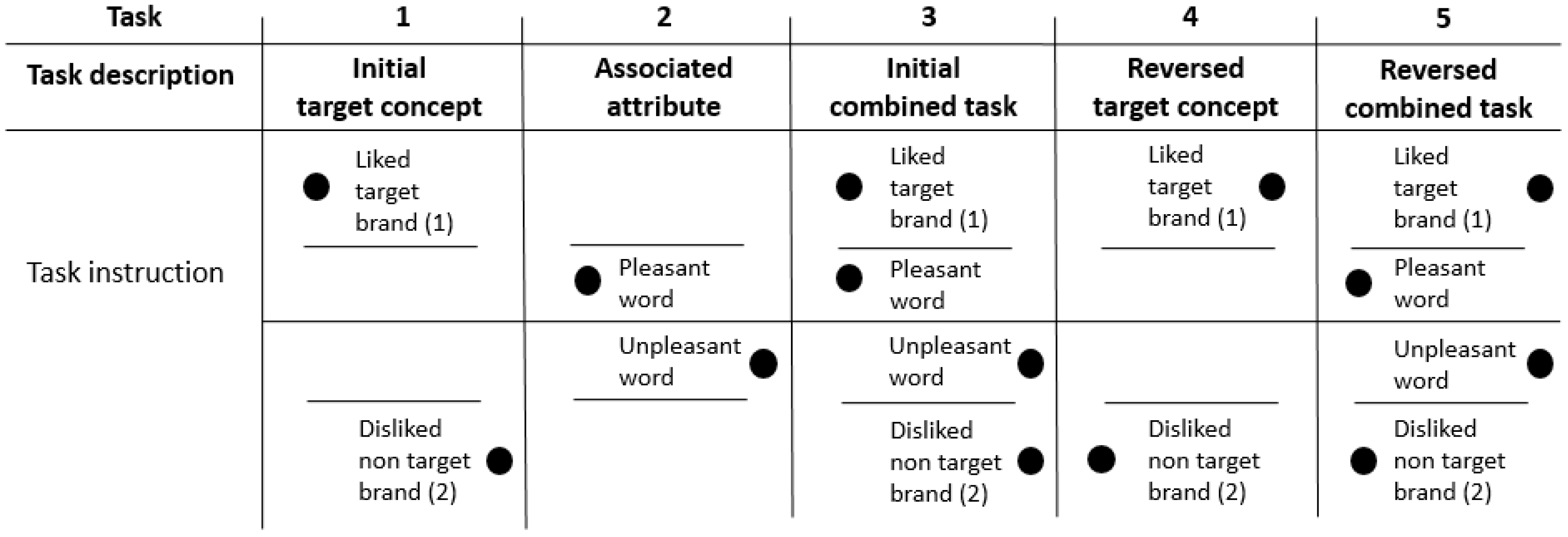
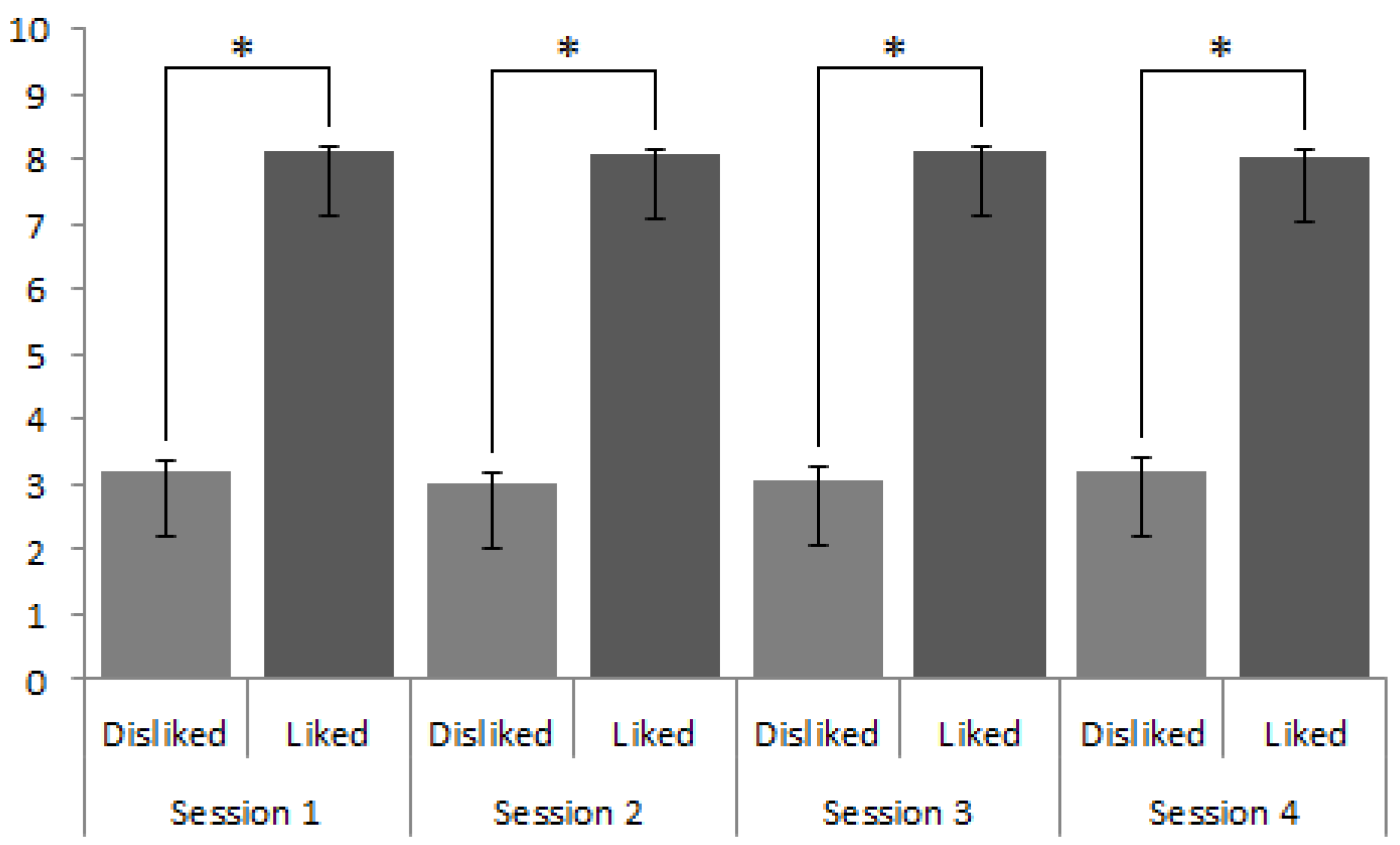
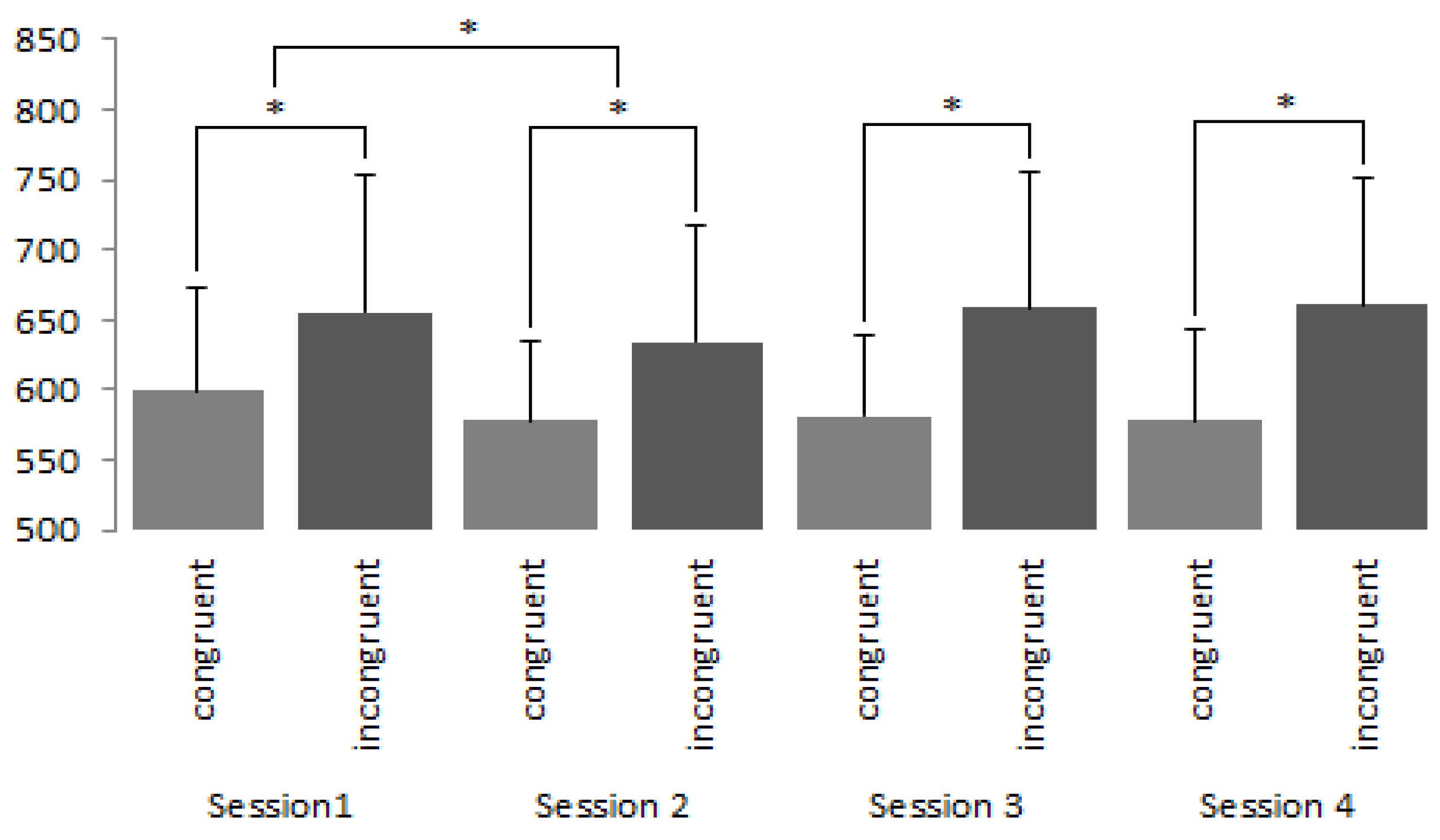
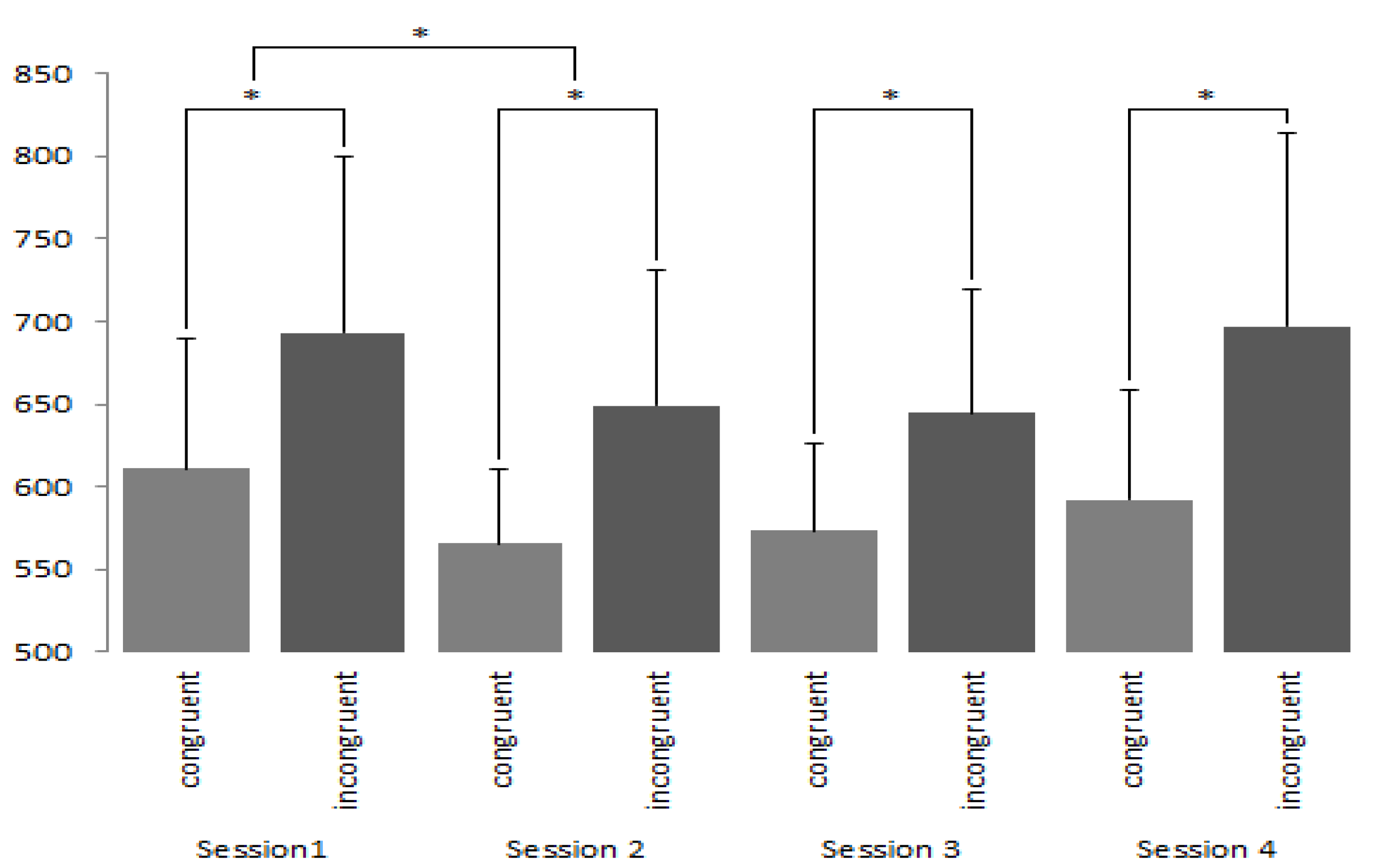
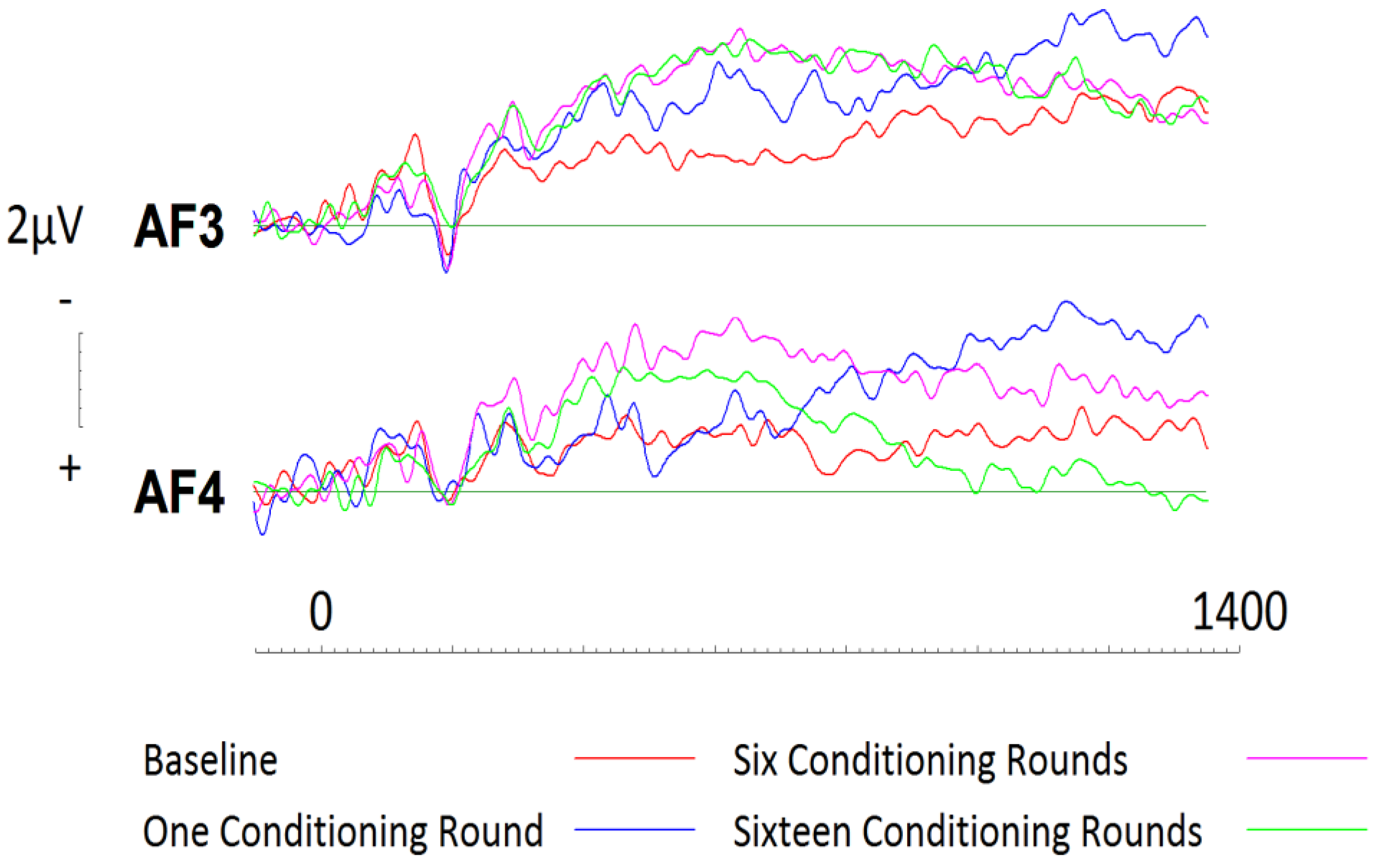
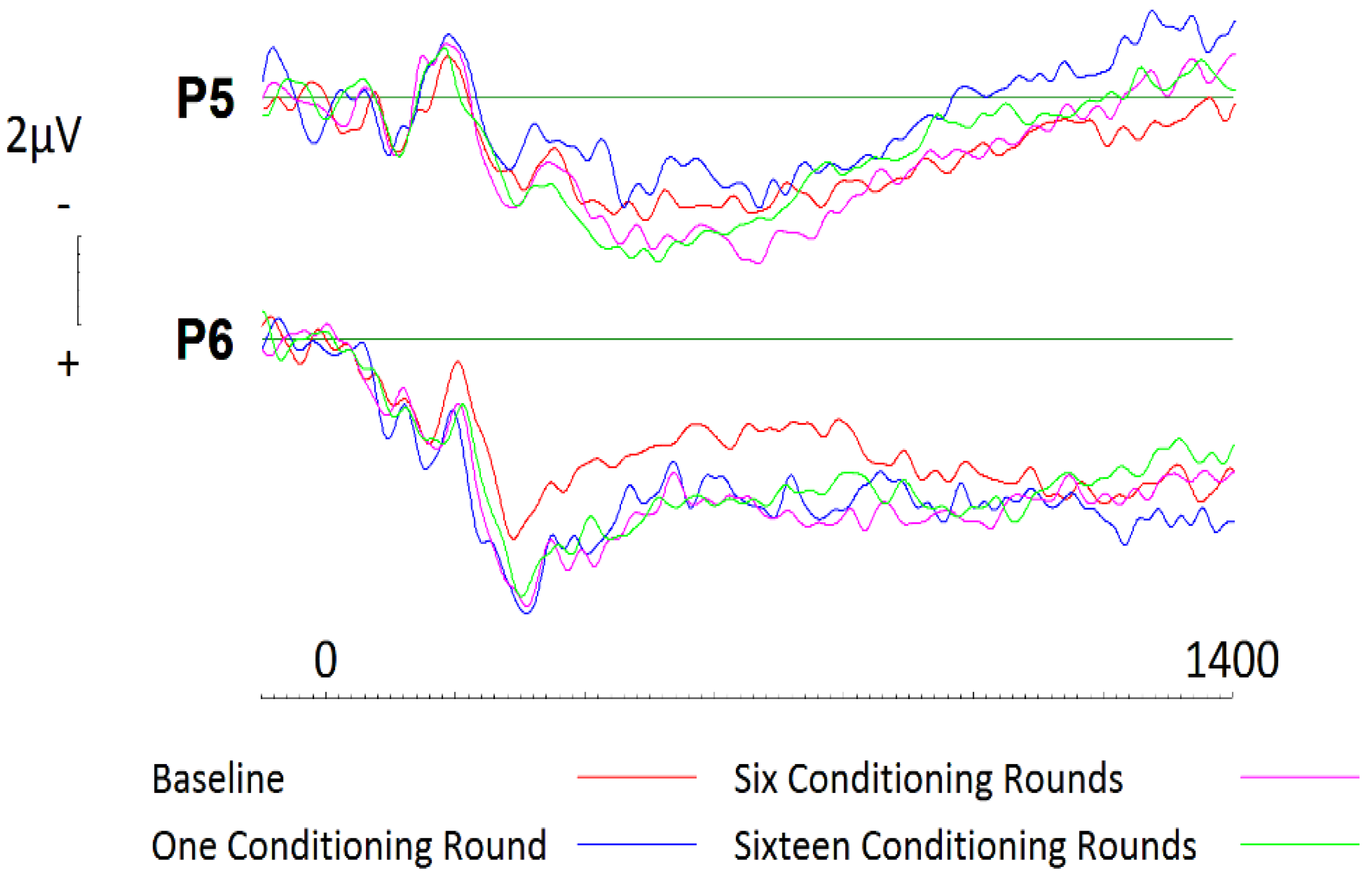
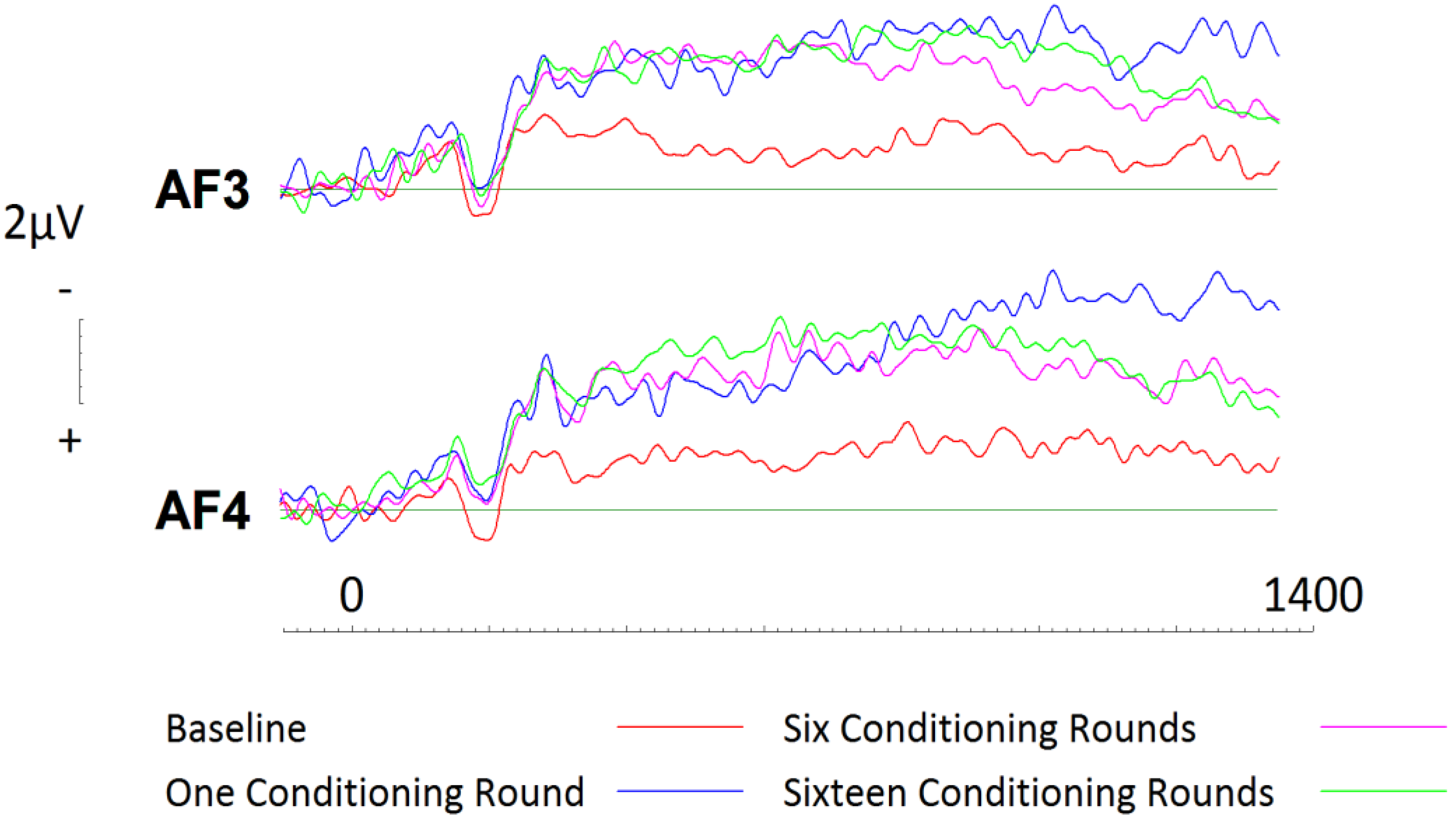
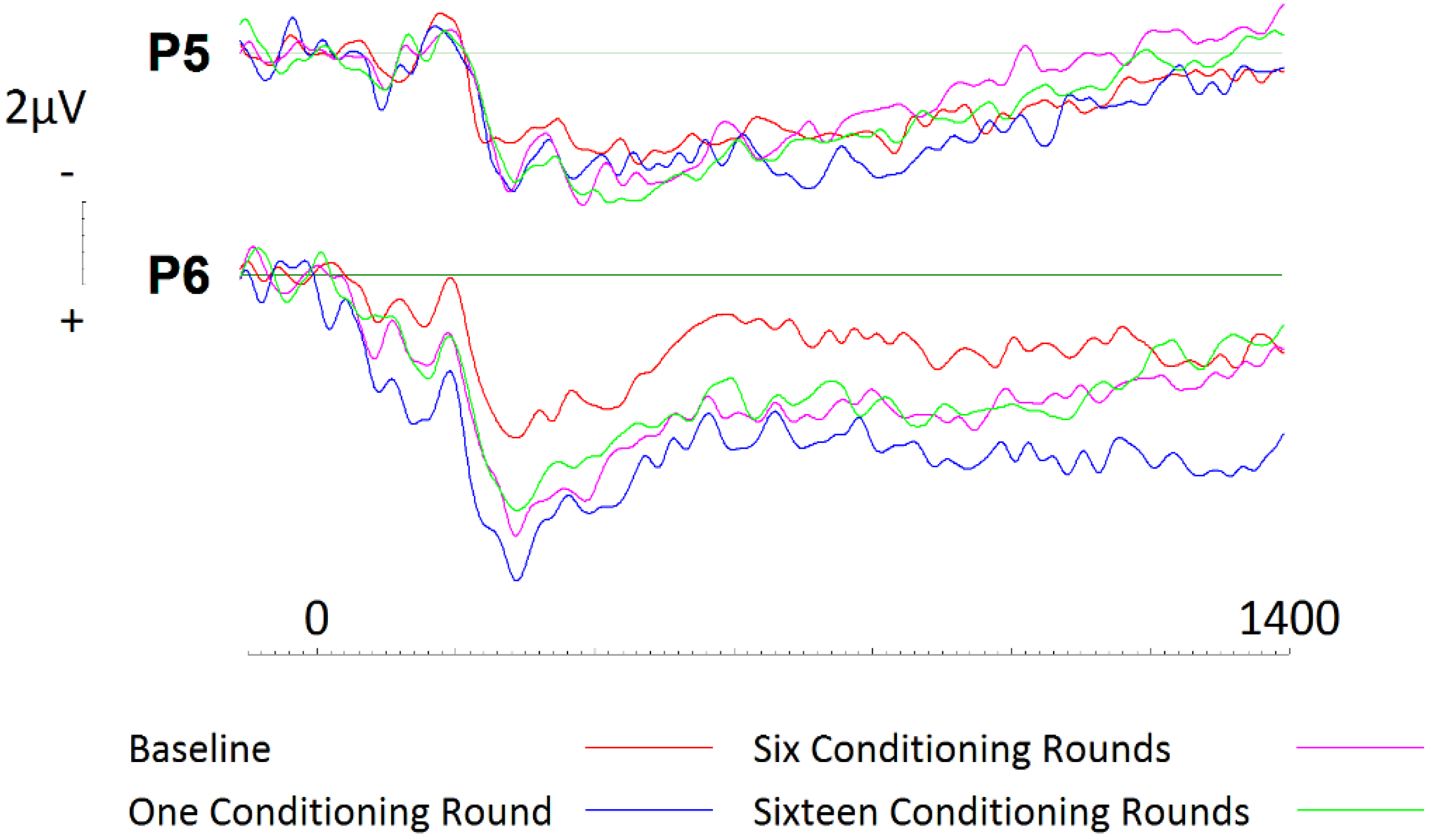
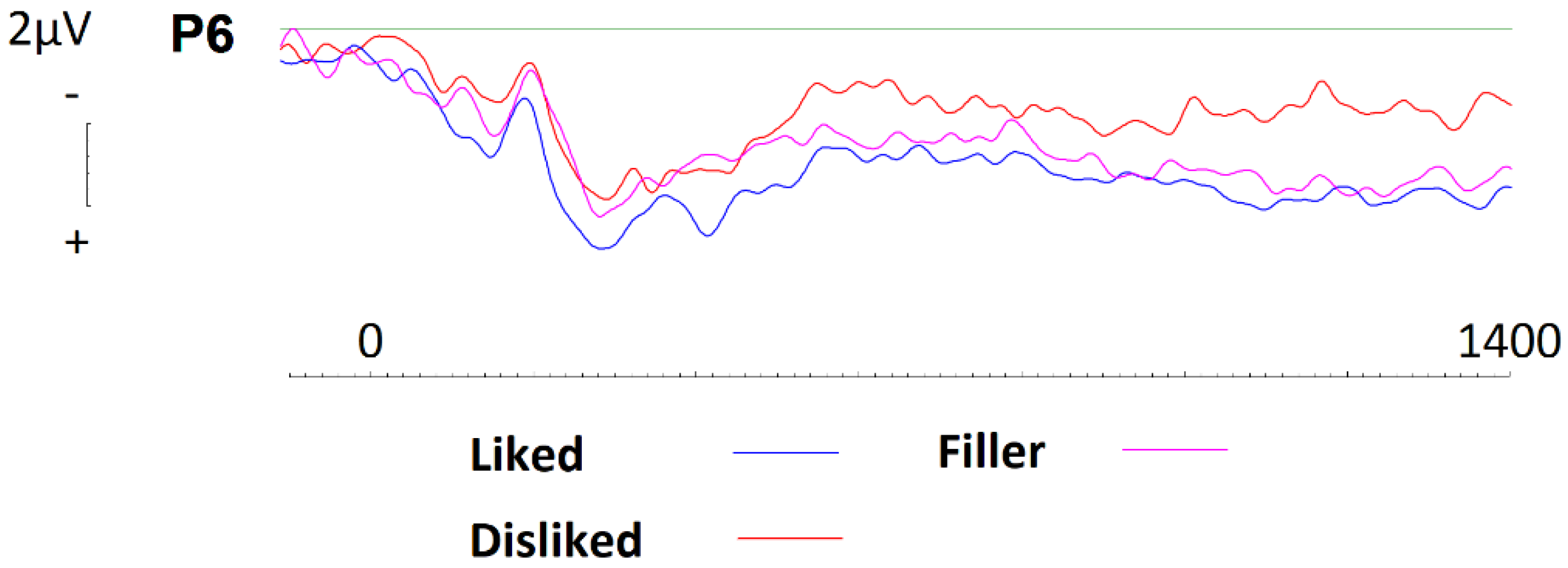
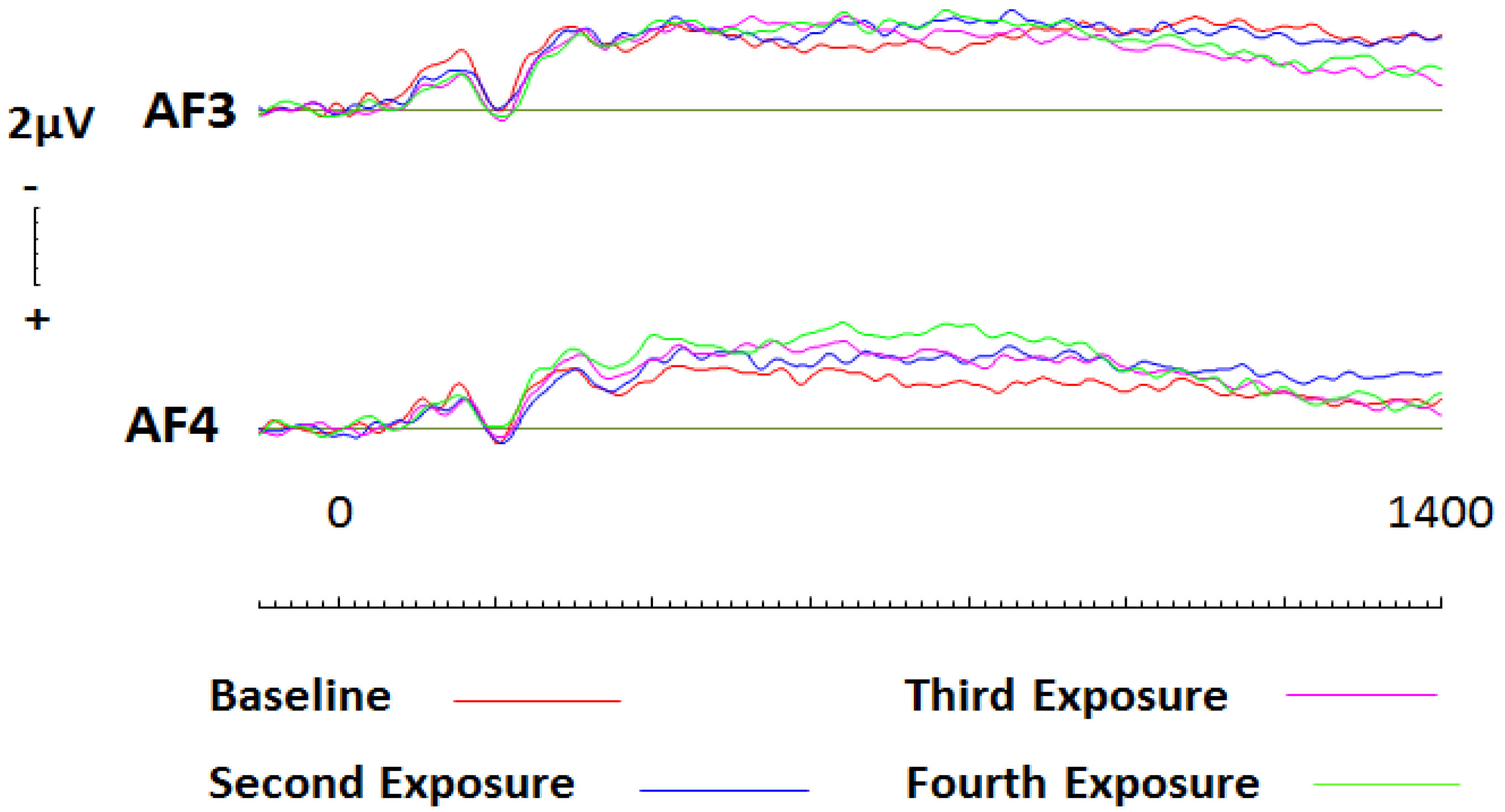

© 2019 by the authors. Licensee MDPI, Basel, Switzerland. This article is an open access article distributed under the terms and conditions of the Creative Commons Attribution (CC BY) license (http://creativecommons.org/licenses/by/4.0/).
Share and Cite
Bosshard, S.; Koller, M.; Walla, P. Can Evaluative Conditioning Change Well-Established Attitudes Towards Popular Brands? Your Brain Says Yes Even Though Your Mouth Says No. Brain Sci. 2019, 9, 106. https://doi.org/10.3390/brainsci9050106
Bosshard S, Koller M, Walla P. Can Evaluative Conditioning Change Well-Established Attitudes Towards Popular Brands? Your Brain Says Yes Even Though Your Mouth Says No. Brain Sciences. 2019; 9(5):106. https://doi.org/10.3390/brainsci9050106
Chicago/Turabian StyleBosshard, Shannon, Monika Koller, and Peter Walla. 2019. "Can Evaluative Conditioning Change Well-Established Attitudes Towards Popular Brands? Your Brain Says Yes Even Though Your Mouth Says No" Brain Sciences 9, no. 5: 106. https://doi.org/10.3390/brainsci9050106
APA StyleBosshard, S., Koller, M., & Walla, P. (2019). Can Evaluative Conditioning Change Well-Established Attitudes Towards Popular Brands? Your Brain Says Yes Even Though Your Mouth Says No. Brain Sciences, 9(5), 106. https://doi.org/10.3390/brainsci9050106





